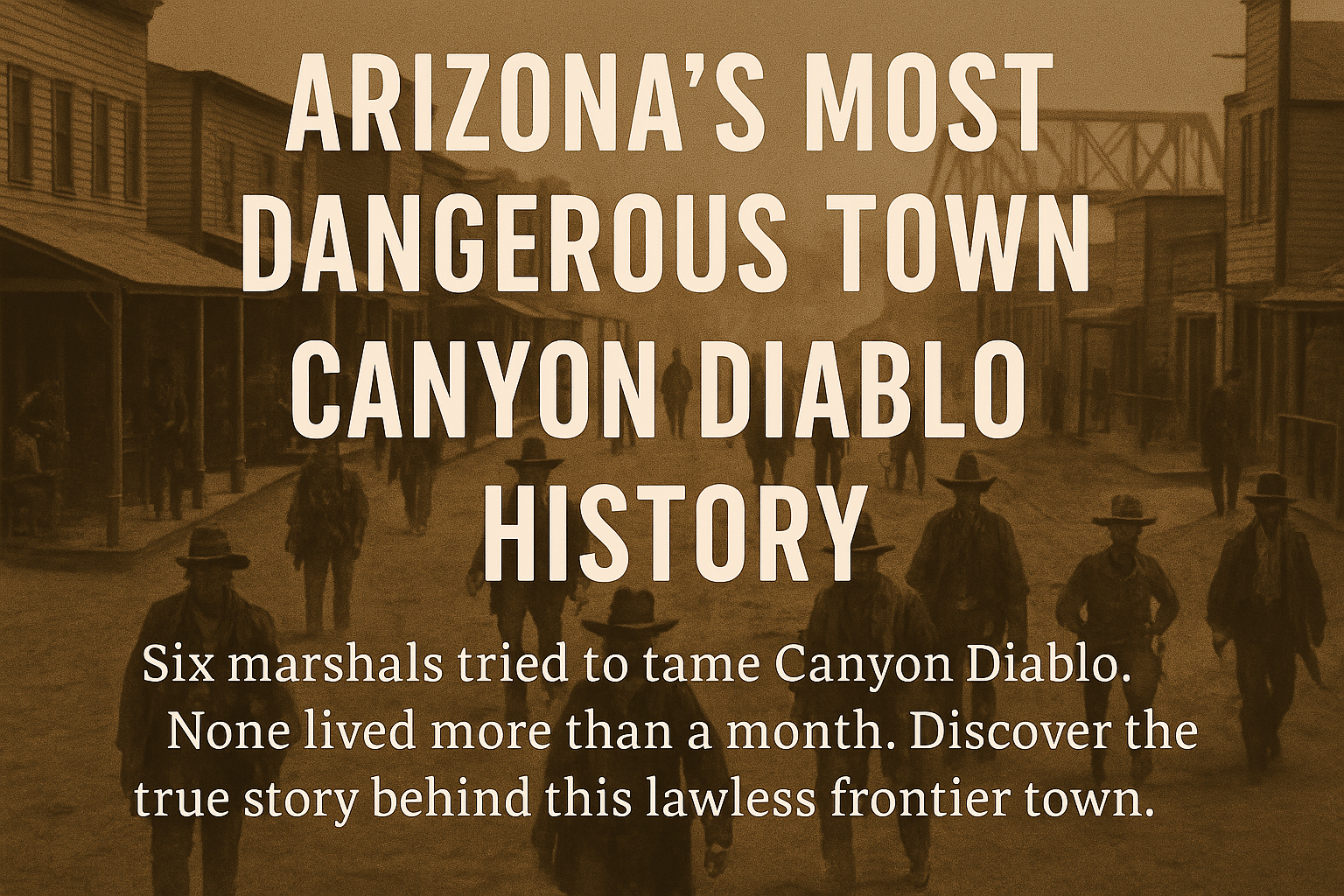Canyon Diablo: Arizona's Most Lawless Town

"Canyon Diablo was the kind of place where men didn't go looking for trouble because it found them first. Lawless, violent, teeming with outlaws who made their own rules."
—J.J. Westin, The Rustler Hunter
When I was researching The Rustler Hunter, I kept coming across references to this place that sounded too dangerous to be real. Canyon Diablo: where trouble didn't knock, it kicked down the door.
This wasn't just another rough frontier town. It put the wild in Wild West. Period.
The Devil's Own Geography
The trouble started with the terrain. In 1853, Lieutenant Amiel Whipple was surveying the thirty-fifth parallel when he encountered a canyon so treacherous it forced his party miles out of their way. He named it Devil's Canyon, a label that proved prophetic when the town took shape three decades later.
When the Atlantic & Pacific Railroad hit the canyon in 1880, construction stopped cold. They needed a bridge. Money troubles meant a ten-year wait. What happened next? Pure frontier chaos. A tent city sprouted like a weed. Drifters, gamblers, and outlaws poured in. The closest law was a hundred miles away, and they knew it.
Where Survival Was a Daily Gamble
Nearly 2,000 residents. Zero law enforcement. You do the math.
The main street hosted fourteen saloons, ten gambling houses, four brothels, and two dance halls. Never closed. Day or night, whiskey flowed, cards turned, and blood spilled.
The regular stagecoach between Flagstaff and Canyon Diablo? Might as well have painted a target on it. Road agents hit it so often that passengers counted themselves lucky to arrive breathing.
The Badge That Nobody Could Wear
Finding volunteers proved harder than rounding up wild mustangs. The first man brave enough to pin on the badge? Dead within five hours.
Five more tried their luck. Same result. Gunned down before they could clean house. Message received: Canyon Diablo didn't want civilizing.
Boot Hill filled up fast. Thirty-five graves marked by wooden crosses and stone piles. Only one man, trader Herman Wolf, managed to die in his bed in 1899. His grave stands alone today, the sole survivor of that blood-soaked era.
The Bridge That Ended an Era
Nothing lasts forever, even outlaws. When the railroad bridge opened in 1890, Canyon Diablo's purpose vanished overnight. The criminal element scattered like tumbleweeds, leaving behind empty buildings and shallow graves.
By the time Route 66 came through the area, only foundations and memories remained of Arizona's most dangerous town.
The Perfect Setting for Rustlers
When I discovered this history, I knew I'd struck gold for The Rustler Hunter. Canyon Diablo wasn't just dangerous: it was outlaw heaven. No law. No rules. No mercy.
J.J. Westin and Hayley Harper walk straight into this viper's nest for their undercover mission. Some places chew up the weak and spit out the bones. Canyon Diablo was one of them.
"Once in town, the noise slammed into me, louder than Holbrook, sharper, raw. Voices tangled in shouting, laughing, arguing, men barking over the off-key twang of a piano that barely held its tune. Boots thudded against the packed earth, some quick and purposeful, others dragging slow and aimless. The air carried too many smells, layered and thick. Sweat, whiskey, tobacco, blood. Something rancid baked in the heat, settling in the alleys like it had nowhere else to go. Canyon Diablo had a pulse, but it wasn't steady. It was erratic. Like something waiting to crack."
This is the Canyon Diablo that comes alive in The Rustler Hunter: a place where history bleeds into fiction, and survival means being faster on the draw than the next man.
Justice has no badge. Join legendary stock detective J.J. Westin in The Rustler Hunter, as the ghosts of Canyon Diablo push him and Hayley Harper into their deadliest assignment yet.